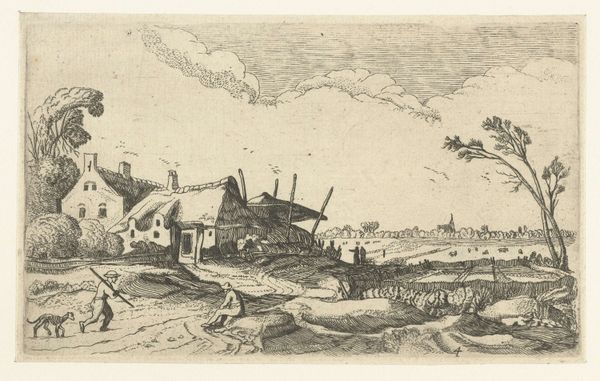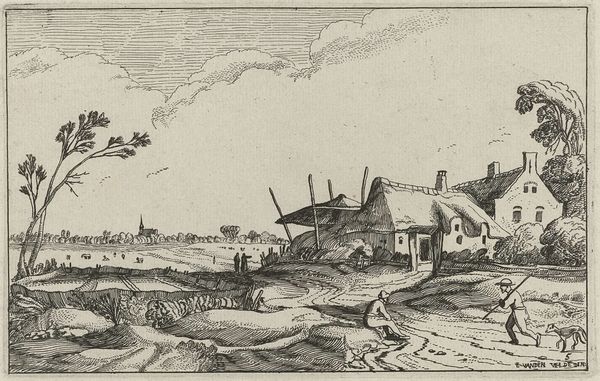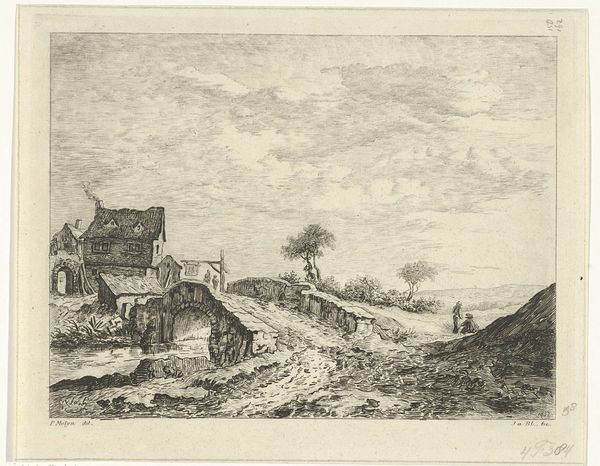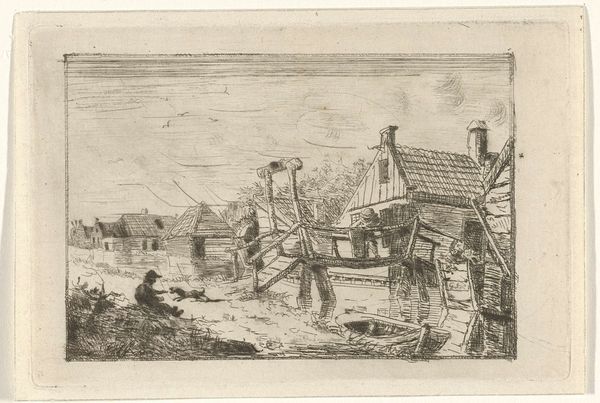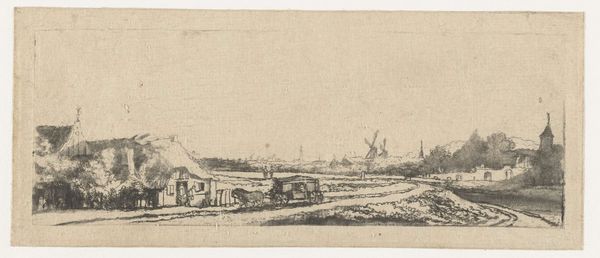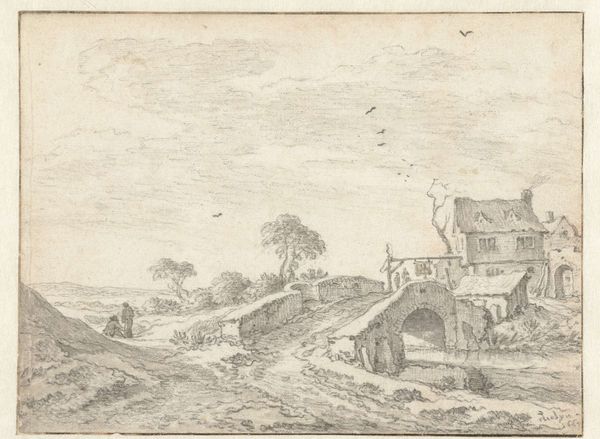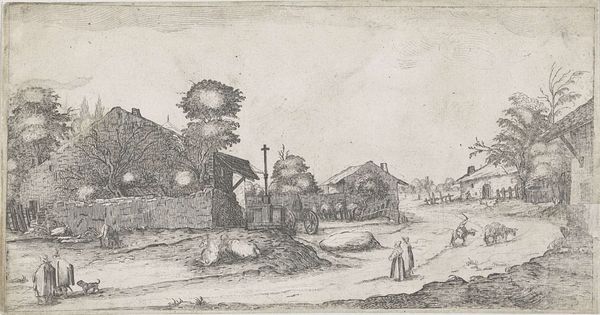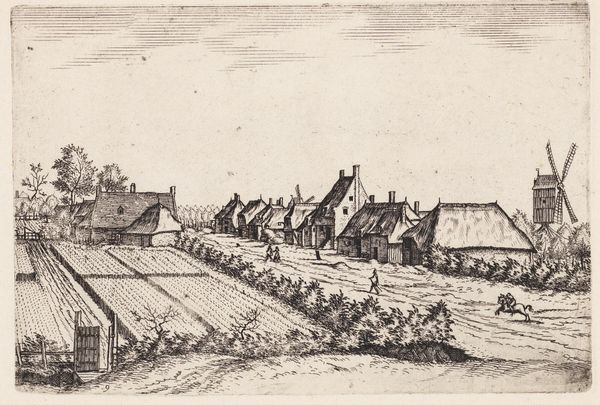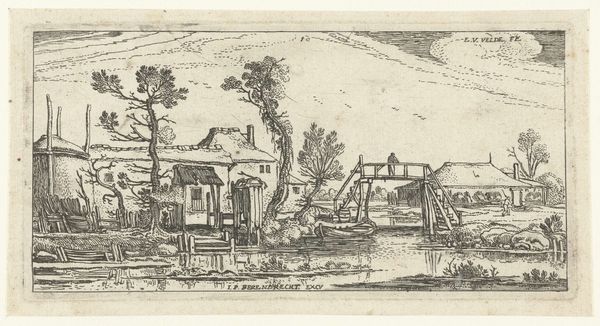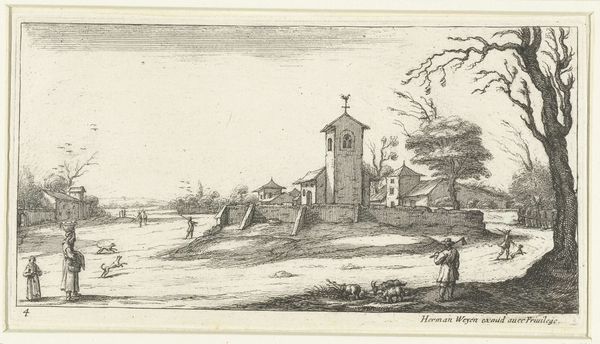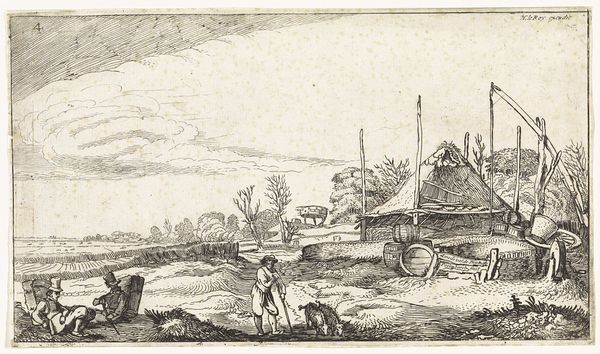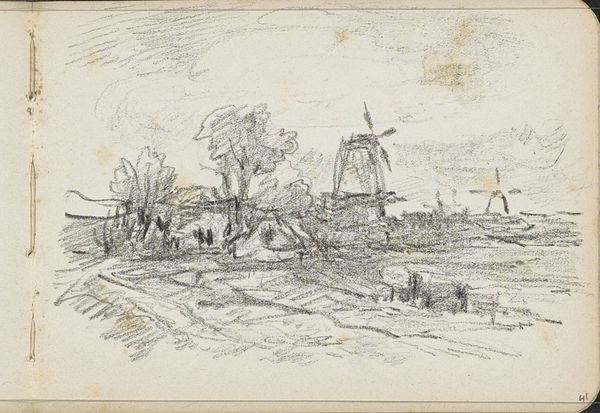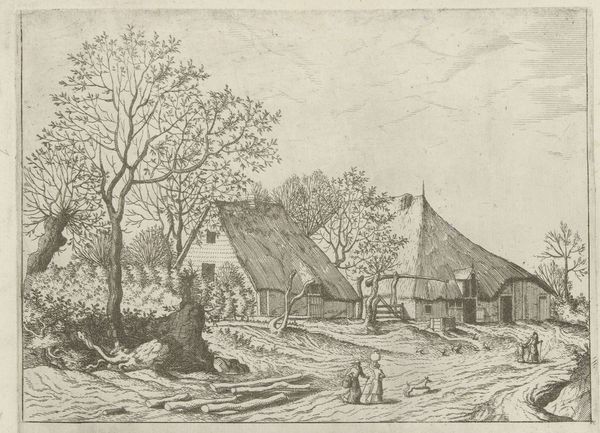
drawing, ink
#
drawing
#
baroque
#
dutch-golden-age
#
landscape
#
ink
Dimensions: height 112 mm, width 175 mm
Copyright: Rijks Museum: Open Domain
Curator: Immediately, I’m struck by the stark contrast and the way the sky dominates the composition. Editor: Let's take a closer look at Esaias van de Velde’s "Farmhouse on a Path with a View over Fields," a drawing made in 1614, now held here at the Rijksmuseum. It's an ink drawing, seemingly simple at first glance, but revealing much about its time. Curator: Absolutely. Look at the figures depicted—they aren’t idealized portraits. Instead, we have laborers, the working class of the Dutch countryside rendered with respect. Van de Velde highlights their relationship with the land that provides for them. Editor: And consider the rise of landscape art during the Dutch Golden Age. It wasn't just about pretty scenery. As Dutch power expanded, owning land became a source of national pride and these landscapes played into that growing sense of identity. Curator: That's clear, the very materials, ink and paper, become instruments to create value and national identity through depicting everyday labor. How was this work commissioned and who might its audience have been? Was it intended for widespread consumption or more restricted circles? Editor: Van de Velde was deeply embedded in a network of artists and patrons so, it is plausible the work initially appealed to a rising middle class. Landscapes become sought-after items displayed proudly in homes, showcasing both wealth and a connection to the land itself. Curator: It all suggests a powerful interweaving of social context, production and emerging commercial markets. Editor: Indeed. Seeing the labor within, the materials, and knowing the drawing found its audience demonstrates art as cultural currency during a formative time. Thank you for your insights! Curator: Likewise! Understanding how land and representation reinforced political will makes appreciating landscapes so much more than just appreciating "scenery".
Comments
No comments
Be the first to comment and join the conversation on the ultimate creative platform.
